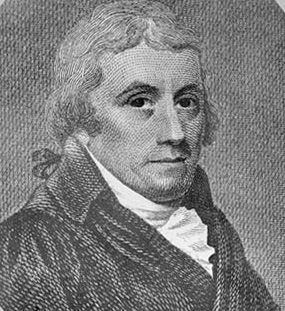
Stubbins Ffirth (1784-1820) was an American doctor, best known for his bizarre self-experimentation while a medical student.
Born and raised in Salem, New Jersey, Ffirth commenced studies at the University of Pennsylvania in 1801. In his third year, Ffirth began to investigate the causes and communicability of yellow fever. This virus was a deadly constant in tropical areas but occasionally appeared in colder cities – a 1793 outbreak in Philadelphia had killed several thousand people.
The causes of yellow fever were then unknown. The most popular theory, propagated by prominent physician Benjamin Rush, suggested that it was spread by miasma or ‘bad air’. The young Stubbins Ffirth, however, came to the conclusion that the fever was transmitted in body fluids and excrements, particularly vomit.
In 1804 he undertook a series of experiments, summarising his findings in a brief manuscript. His first trials involved feeding or injecting animals with black vomit, harvested from the bedsides of dying yellow fever patients – but they failed to prove Ffirth’s theory:
“Experiment One: A small sized dog was confined in a room and fed upon bread soaked in the black vomit. At the expiration of three days he became so fond of it that he would eat the ejected matter without bread; it was therefore discontinued…”
“On October 4th 1802, I made an incision in my left arm, mid way between the elbow and wrist, so as to draw a few drops of blood. Into the incision I introduced some fresh black vomit… a slight degree of inflammation ensued, which entirely subsided in three days, and the wound healed up very readily.
Undaunted, Ffirth continued filling himself with the vomit of dying yellow fever patients, injecting it into veins, under his cuticles and into his eye. For his tenth experiment, he fried up three ounces of vomit in a pan and inhaled the steam. Next, he constructed his own ‘vomit sauna’, sitting at length in a small closet with six ounces of steaming vomit.
Ffirth eventually cut to the chase and decided to take his black vomit directly:
“After repeating the two last experiments several times, and with precisely the same results, I took half an ounce of the black vomit immediately after it was ejected from a patient, and diluting it with an ounce and a half of water, swallowed it. The taste was very slightly acid… It neither produced nausea or pain… My pulse, which was beating 76 in a minute, moderately strong and full, was not altered either in force or frequency… No more effect was produced than if I had taken water alone.”
Despite these adventures, Ffirth remained in perfect health. Still, he was not one to give up. He decided to repeat the experiments “a great number of times”, eventually drinking several doses of vomit, “half an once to two ounces without dilution”. But even this had no effect, leaving Ffirth to concede that yellow fever was not carried in human vomit.
The transmission of yellow fever – in human blood plasma carried by mosquitos – was eventually discovered by US Army physician Major Walter Reed in 1901.
Source: Stubborns Ffirth, A Treatise on Malignant Fever, with an attempt to prove its non-contagious nature, Philadelphia, 1804. Content on this page is © Alpha History 2019-23. Content may not be republished without our express permission. For more information please refer to our Terms of Use or contact Alpha History.
